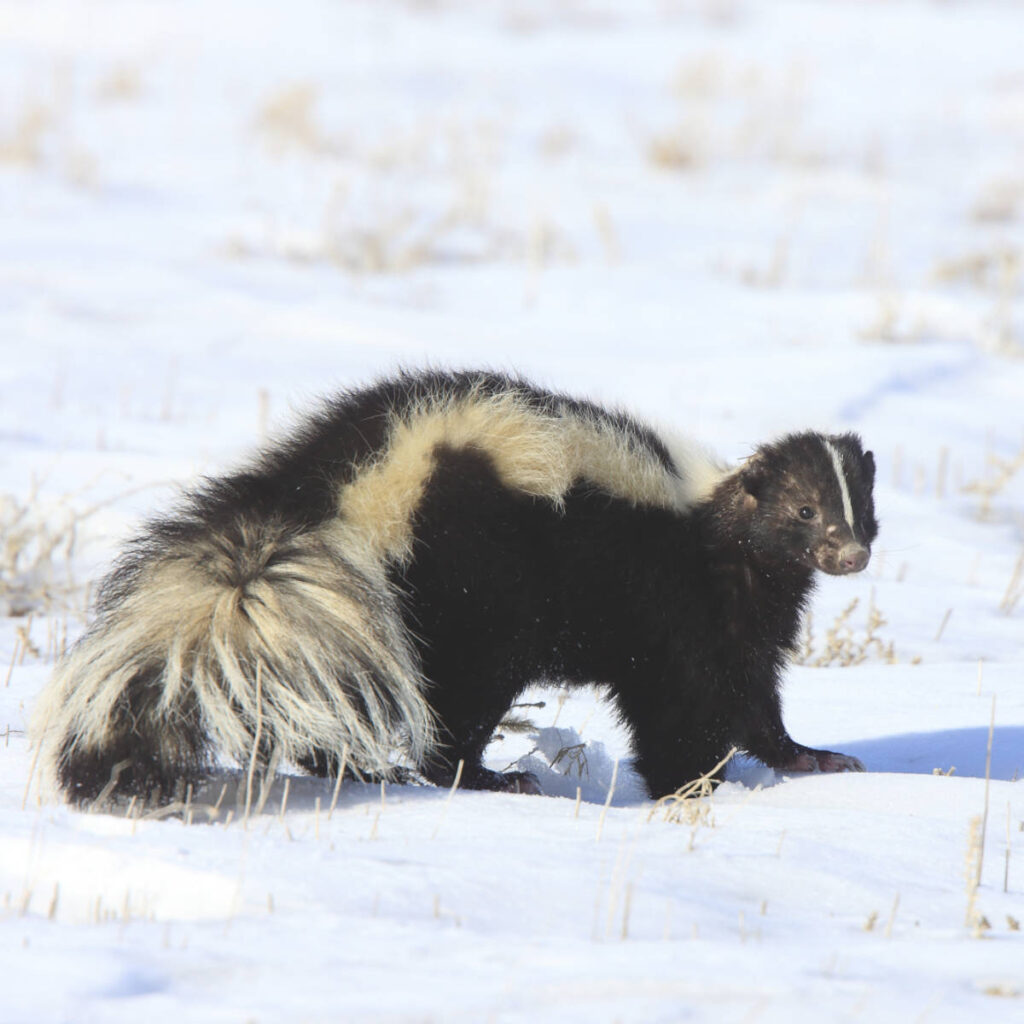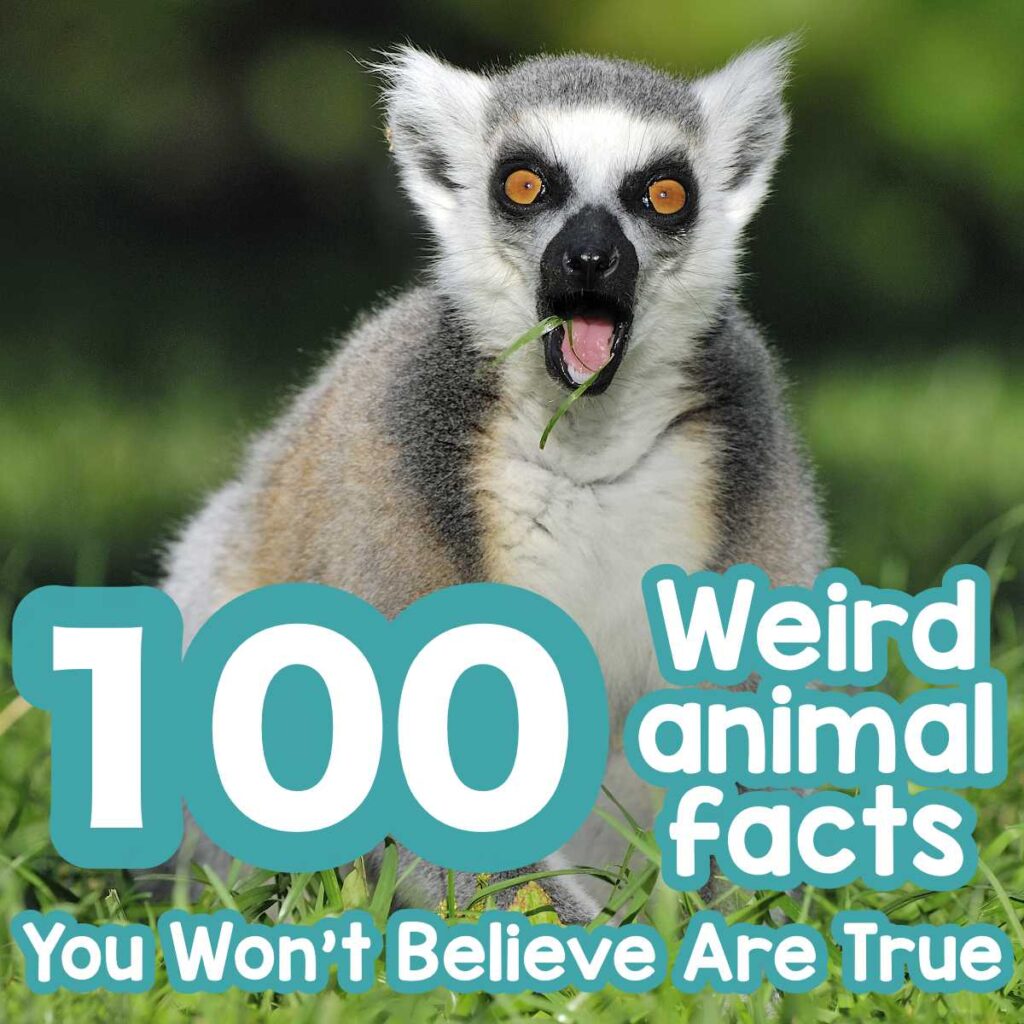Last Reviewed and Updated on July 26, 2022
Famous for their foul-smelling spray, skunks are one of the most feared animals on the globe. Even predators avoid them. Read through some of the most fascinating facts about skunks, from their fur patterns to the weird characteristics of their spray.

1. Most common skunk fur color is black and white
When you think about skunks, a black animal with white stripes usually comes to mind. This color combination is the most common one but not the only one. Some skunks are brown, gray, and some are even cream-colored.
2. All skunks are striped, and they are all striped from birth
All skunks have stripes (except albino skunks). These stripes can vary greatly in their appearance, from the number of stripes to the width and with or without spots. Skunks are born with a soft layer of fur already displaying the striped pattern.
The most common and recognized species is the striped skunk, which usually has one white stripe that breaks into two along the shoulders.
Spotted skunks have their stripes curved, and they can even be broken into patches, appearing as spots. They all have individual patterns as well.
3. Their defensive weapon is a stinky spray
This is one of the most well-known facts about skunks. These animals are notorious for their foul-smelling spray, which they can spray from their anal scent glands. The spray is a mixture of sulfur-containing chemicals with a very strong odor. Most predators and animals recognize skunks by their markings and avoid them. If not, the skunk will defend itself by spraying this vile spray on its predator. Predators generally avoid skunks.
Think this is weird? You will love our list of some of the weirdest facts about animals.

4. The smell is so powerful humans can detect it up to 3.5 miles / 5.6 km downwind
We humans aren’t exactly known for our extraordinary sense of smell, but the smell of the skunks’ spray can be detected over long distances, even by humans.
5. Skunks need 10 days to replenish their spray supply
They can deliver 5 or 6 successive sprays before their glands are empty. It takes them up to 10 days to fully replenish their supply.
6. Skunks are rarely prey of other animals
They are rarely preyed upon, and most animals avoid them. Younger inexperienced animals (wolves, foxes) may try it before they learn their lesson. But generally, adult animals only seldomly hunt them.
The great horned owl is the only predator that regularly hunts them.
7. Spraying is their last means of defense
Luckily for all parties included, spraying is the last means of defense for a skunk. They won’t use up their spray for no reason. Their appearance usually deters predators. If this fails, a skunk will stomp its front feet, lift its tail and issue a warning growl.
If the animal (or human) doesn’t retreat after the warning, the skunk will aim its spray at their eyes and retreat.
8. Skunks are solitary animals
They are solitary animals, except during the breeding season. Some females may also den together.
9. They are one of the primary predators of honeybees
Skunks are omnivores. They eat plants, insects, fruit, nuts, small mammals, reptiles, birds, and eggs.
They also have an appetite for bees and are one of their primary predators. Skunks don’t seem to mind beestings.
10. The spray is flammable
In what has to be one of the most random facts about skunks – their spray is highly flammable.
